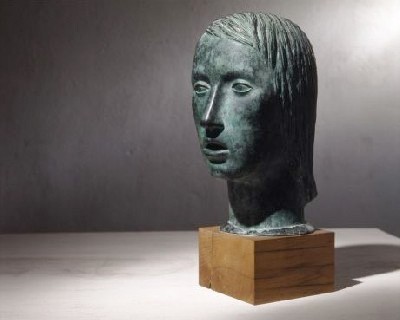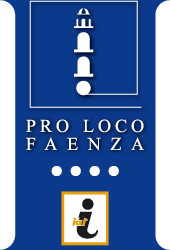- Visit Faenza
Places to see
- Accommodations
- Food and drink
- Events
- Guided tours
- News
- Ceramics
- Pro Loco Faenza
Useful infos
- City map
- City history
- Churches, monuments
- Museums
- Parks and gardens
- Essential informations for major monuments
- Routes
- Book a guided tour of the city
- Romagna Visit Card
- Palio of Niballo and Rioni
- Cultural activities
- Leisure
- Historical shops
- Twin towns
- Getting here
- How to move in the city
- Useful phone numbers
- Other useful informations
- Links

Guerrino Tramonti was born in Faenza, June 30, 1915. He has exhibited since his youth as a sculptor in regional and national exhibitions: in 1931, at the age of just sixteen, he won the "Rimini" in 1932 and 1934, the 1 "prize in the" Rubicon and "the city of Rimini . In his early twenties, in 1938, is awarded to the 1 st National Ceramics Competition organized by the city of Faenza.
In this event is appreciated "the synthetic sincerity of certain figures," a group of works in clay and glazes made Albissola in "House of Arts", where for about a year Tramontisi was transferred to work as a modeller. A "head girl" who from the competition, went to the collections of the International Museum of Ceramics in Faenza, and which was destroyed during the Second World War. Over the years and decades that followed, until the late sixties when it will end in the practice of making ceramics to paint, has obtained a number of awards including two awards "Faenza" in 1952 (with works made in collaboration with Antonio Scordia ) and 1955 (ex-aequo with Carlo Negri).
In 1951 he teaches at the School of Plastic Arts of Civita Castellana, ceramic center on the outskirts of Rome, where, for the friendship with Franco Gentilini in Faenza with whom he had relations right from childhood, attending the best arts and cultural environments of capital. In 1956 the publisher Roman De Luca published a monograph with the presentation of Leonardo Sinisgalli, in the series "Artists today."
In 1953 he was appointed Director of the School of Ceramic Art Castles of Abruzzo, in 1958 the School of Arts of Cagli in 1959 of the State Institute of Art in Forlì until the late sixties, to assume then - for no other exercise - the direction of the Institute of Ceramic Art of Nine of Bassano which ends in the early seventies the school career.
Guerrino Sunsets, Arturo Martini invited in 1934 to follow him without hesitation in his studio in Milan after winning the "Rubicon", wishes to be considered as a self-taught, in the second half of the twenties, he attended the Royal School of Ceramics, where, however, , points out that you have learned about color from a master potter who was the Faenza Anselmo Bucci.
- Address
Via Fratelli Rosselli, 8
48018 Faenza RA - Phone: 392.3011196
- Email: museo@tramontiguerrino.it
- Web: www.tramontiguerrino.it
- Area: Center
- Opening:
Monday/Saturday: from 2.30 p.m. to 6.30 p.m.
Guided visits on request - Prices:
Free entrance - Map:
Graphics - HTML: Caterweb
Developed by: CicoNET
CMS: Web Portal Now
All CREDITS








